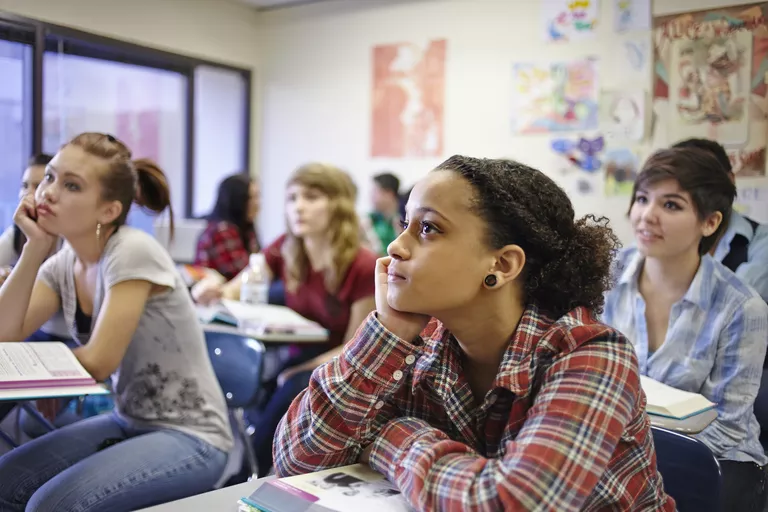Teaching Methods: If you are looking for new tools to diversify your daily classroom activities, then these teaching methods are for you. They increase and deepen knowledge using descriptive visual models. And these are supplemented by manipulative mechanics and expressive animation.
In this article, we have listed and made a review of the most popular approaches that might be useful for teachers.
What to know about Teaching Methods
The list of teaching methodologies you could use with elementary-aged students is a long one. An approach effective for one teacher may not necessarily be useful for another.
This is because every method uses different tools and techniques for achieving common educational goals.
That’s why many teachers try to extract some ideas from different approaches. Thus, they mix and incorporate them into one unique teaching approach. And this depends on the students’ and school’s needs and other circumstances.
However, no matter the methods a teacher chooses, nowadays it seems quite difficult to implement any approach without relying on technology.
Are you ready to learn more about some of the best methods of teaching? Check out our list and analysis below to learn which methods have the research to back them up.
List of Teaching Methods
1. Teacher-Centered Instruction
This is recognized as the most conventional approach. It is also one of the best teaching methods. The teacher-centred methodology is based on the idea that the teacher has the main responsibility in the learning environment.
Teachers are in charge of the classroom and direct all activities. Typically, in this approach, students are seated at individual desks that face the teacher. While group work may take place, most classroom time is spent with the teacher explaining concepts and assigning individual work.
In other words, students passively absorb the information while the teacher actively delivers it.
Advantages of this Method
- It highlights the importance of the teacher’s role as a facilitator.
- Having been built on behavioural theory, this teaching method facilitates control over changes in student behaviour through direct instruction.
Disadvantages of this Method
- Critics cite a lack of stimulation of student motivation. Indeed, the teacher-centred method, used blindly, may not allow students enough freedom of mind and creativity.
- It is poor at promoting analytical thinking and problem-solving skills. Not having enough opportunities for students to make their own choices may result in a lack of decision-making skills and even an inability to think critically.
2. Small Group Instruction
This is also one of the best teaching methods. Small group instruction (SGI) usually follows whole group instruction. And it provides students with a reduced student-teacher ratio, typically in groups of four to six students.
Also, SGI allows teachers to work more closely with each student on a specific learning objective, reinforce skills learned in whole group instruction, and check for student understanding.
This teaching method is based on constant activities around workstations: groups working with the teacher and groups working independently on varied activities, such as using manipulative or computer/online resources.
Advantages of this Method
- Lessons are adapted to each student’s level. This allows teachers to provide targeted, differentiated instruction to small groups of students in a natural way.
- It helps the instructor to more closely evaluate what each student is capable of and construct strategic plans around the assessments.
- It promotes students’ social adaptation skills. Students who find it difficult to ask questions and participate in a large group setting may benefit from working in a small group setting, where they feel more at ease and less overwhelmed.
Disadvantages of this Method
It takes more time and effort to prepare materials and organize workstations for each student group.
Teachers need to think through each type of activity that will be provided at workstations: they should be equally engaging and effective.
Also, students might feel pressure to always be involved, always contribute to lessons, and always take some kind of role in group work.
3. Student-Centered / Constructivist Approach
This is also one of the best teaching methods. With the development of the educational sphere and society in general, the idea of a student-centred approach has become more popular. And there are good reasons for that.
Student-centred classrooms include students in planning, implementation, and assessments. Involving the learners in these decisions places more responsibility and ownership on them rather than on the teacher.
Also, teachers must become comfortable with changing their leadership style from directive to consultative.
Meanwhile, students may work in small groups, access centres, and move about the classroom freely.
Advantages of this Method
- Students play a more active role in their learning and develop a sense of responsibility.
- Students have a chance to stimulate their analytical thinking, by “making sense of what they are learning by relating it to prior knowledge and by discussing it with others,” according to American educational psychologist J. Brophy.
Disadvantages of this Method
There is a risk of facing some behavioural problems by giving students independence, especially when it comes to young children.
This method works best when the instructor makes the lesson interesting. Without this, students may get bored, their minds may wander, and they may miss key information.
READ ALSO!!!
- BUK Student Portal Login 2022
- UNILAG Student Portal 2022 Update
- Grant for College Student to Apply 2022
- How to Save Money as a Student 2022
4. Project-Based Learning
This is also one of the best teaching methods. A relatively new teaching method, project-based learning falls within the student-centred approach.
However, these are big, meaty projects in which students acquire knowledge, research, think critically, evaluate, analyze, make decisions, collaborate, and more.
Between projects, the teacher may provide scaffolding and smaller bite-sized projects. This is to help build skills such as how to research, how to solve division problems, how to write a letter, etc.
Thus, students build on what they know by asking questions, investigating, interacting with others, and reflecting on these experiences.
However, it is quite a time consuming and requires good classroom management skills.
Students without experience in group work may have difficulties adapting roles and negotiating a compromise.
5. Montessori
This is also one of the best teaching methods. This type of teaching is based on a methodology that’s over 100 years old. Yet, it continues to offer a novel approach to creating a student-centred classroom.
This method encourages the use of “materials” or carefully curated objects designed for learning.
Strong intrinsic motivation and a strong sense of responsibility are important qualities that the Montessori Method strives to instil in students.
Also, it creates a positive learning environment. The multi-age learning environment is unique and a key factor in this educational method.
Younger children have a great opportunity to develop their social, communication, leadership, and emotional skills by working with older children. Older children also benefit from this approach.
However, it can be expensive. For Montessori schools, it is very hard to keep their prices low. Also, some teachers and students may find it difficult to get used to the looseness of the curriculum compared to familiar methods of teaching.
What is the Best Method of Teaching?
If you have ever asked the above question, then hear this. There is no “best” method of teaching.
However, many researchers today agree that including more student-centred learning approaches in the classroom can improve learning.
Using only a teacher-centred approach leaves out many skills and learning opportunities for students.
Yet, there may still be space for teacher-centred learning for some specific topics and learning objectives. However, teacher-centred learning shouldn’t be the only strategy in your teacher toolbox.
In a nutshell, know that each teacher needs to find a teaching style that fits his or her personality. Thus, an effective teacher is a passionate teacher who is confident in what they’re doing!
Therefore, if any of the strategies on this list of teaching methods intrigues you, why not look into it a bit more?
Interestingly, you might discover a new method that motivates your students and improves their learning and your teaching experience! What do you think about this?





